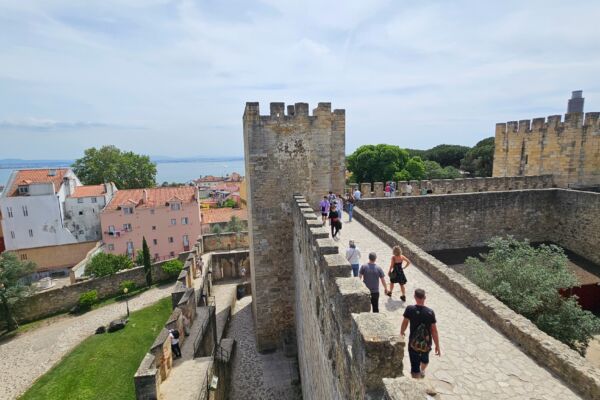In Portugal, located in the southwestern part of the Iberian Peninsula in Europe, sandwiched between Spain to the east and north, and facing the vast Atlantic Ocean to the west and south, it is often referred to as the southwestern end of the European continent. The country boasts a mild climate, a charming coastline stretching 850 kilometers, beautiful natural landscapes, excellent cuisine, quality wines, and unique cultural heritage, making it an ideal year-round vacation destination.
This series of articles will showcase some famous landmarks and unique cuisine of Lisbon, the capital of Portugal, and its surrounding areas.
Lisbon is Portugal’s largest seaport city and a city rich in historical and cultural heritage, also known as one of the most charming and dynamic cities in Europe. The journey of the great maritime discoveries over five hundred years ago began here.
Situated at the mouth of the Tagus River, this ancient city is built along the slopes, creating a picturesque skyline with red roofs and earning the nickname “City of Seven Hills.” In 2017, it was named one of the top ten must-visit travel destinations globally by Lonely Planet. The yellow trams, hilly streets, and various romantic viewpoints are the city’s main features. Lisbon is divided into the downtown area of Pombal, the Alfama district, and the Belém district. Nearby areas worth visiting include Sintra and Pena Palace.
Due to Lisbon’s unique hilly geography, some areas are challenging for buses to navigate. To address this, the government implemented a city tram system that can travel on inclined slopes, becoming a distinctive feature of Lisbon. These charming yellow antique trams, dating back to 1901, form one of Europe’s oldest tram systems, essential not only for tourists but also for local residents. Lisbon still operates 5-6 tram routes today.
If you have limited time and can choose only one route, the iconic Tram 28 is a must-see.
Tram 28 departs from Martim Moniz Square, passing through the famous Alfama district and the Baixa downtown area, covering most of the Lisbon old city’s iconic sights, making it very convenient for visitors. Inside the carriage, the wooden window ledges and dark brown leather seats exude a vintage feel. Traveling through Lisbon’s alleys, the streets can be so narrow that you could almost touch the walls of the houses, and occasionally, residents casually inhale and suck in their stomachs to allow the tram to pass before moving on.
The Lisbon Cathedral (Santa Maria Maior de Lisboa) is the city’s oldest Catholic church, located in the old Alfama district. Built in 1147, it has withstood several earthquakes. The church’s origins lie as a mosque, and through multiple renovations, it evolved into a combination of Romanesque, Gothic, and Baroque architectural styles. The Romanesque structure, complemented by Gothic rose windows and Baroque doors, creates a harmonious blend. The interior of the church is simple yet elegant.
Not far from the Lisbon Cathedral is one of Lisbon’s oldest buildings – São Jorge Castle (Castle of St. George), also known simply as St. George’s Castle. This majestic defensive fortress sits atop the rolling hills of the Alfama old town and dates back to the 2nd century BC. After Lisbon became the capital of Portugal, this was once a royal palace. Despite defending against numerous attacks historically, the castle could not escape the devastation of the Lisbon earthquake. In the 20th century, extensive restoration efforts were carried out, making it one of Lisbon’s oldest cultural heritage sites and tourist attractions today.
Within the castle, visitors can explore the elegant gardens and the labyrinthine spaces inside the castle. From the tower and the castle walls, exceptional views of the Tagus River and the city’s terracotta rooftops can be enjoyed. Additionally, from the elevated viewpoint, other popular landmarks can be spotted.
(to be continued)

